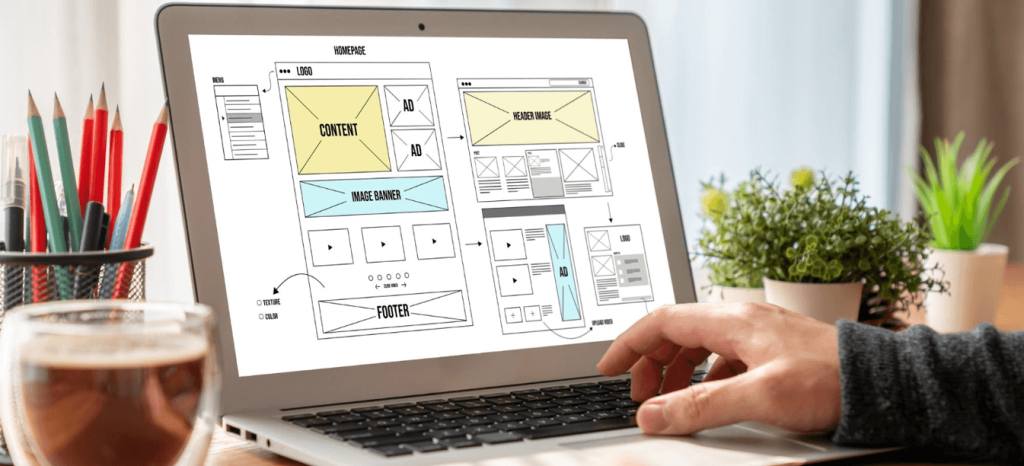In today’s digital age, the online presence of businesses is more critical than ever.
At the heart of this online presence lies web design and development, a dynamic field that shapes the digital identity of businesses worldwide. In this comprehensive guide, we’ll delve into the fundamental aspects of web design, explore the concept of responsive design, understand the process of designing a web page, shed light on CMS in web design, explore HTML’s role in web page creation, and finally, decipher the synergy between web design and development.
What is Web Design?

Web design encompasses the process of creating and crafting the visual elements of a website. It involves a combination of layout, graphics, colors, fonts, and interactive features that collectively create the user experience. Beyond aesthetics, effective web design focuses on user interface (UI) and user experience (UX) to ensure seamless navigation and engagement for visitors.
Understanding Responsive Web Design

Responsive web design is an approach that emphasizes the creation of websites that adapt and respond to various screen sizes and devices. In a world where users access the internet through different devices, such as smartphones, tablets, laptops, and desktops, responsive design ensures that websites maintain their functionality and visual appeal across all platforms.
Designing a Web Page: The Process Unveiled

The process of designing a web page involves several key steps. It starts with conceptualization and wireframing, where the layout and structure of the website are planned. This is followed by the actual design phase involving graphics, color schemes, and typography. Development comes next, where coding languages like HTML, CSS, and JavaScript bring the design to life. Testing and optimization then ensure the website functions flawlessly before launch.
The Role of CMS in Web Design

Content Management Systems (CMS) play a pivotal role in web design, offering a user-friendly interface for managing website content. CMS platforms like WordPress, Drupal, and Joomla simplify content updates, allowing website owners to add, edit, or remove content without extensive technical knowledge. CMS integration enhances the flexibility and scalability of a website.
Designing a Web Page Using HTML

Interactivity lies at the heart of digital marketing. Platforms like social media enable businesses to engage with their audience in real-time, fostering meaningful connections and building brand loyalty. Through engaging content, interactive campaigns, and prompt customer service, businesses can create personalized experiences that resonate with their audience, leading to increased engagement and customer satisfaction.
The Interplay of Web Design and Development

Web design and development are interconnected disciplines, each complementing the other in creating functional and visually appealing websites. While web design focuses on the aesthetics and user experience, web development delves into the technical implementation and functionality of the site. Together, they converge to create seamless digital experiences.
In conclusion, web design and development are integral components of establishing a robust online presence. From crafting visually engaging websites to ensuring functionality across devices, understanding the nuances of web design is essential for businesses aiming to thrive in the digital landscape. Embracing responsive design, leveraging CMS capabilities, and mastering the fundamentals of HTML are pivotal steps toward creating impactful and user-centric web experiences.